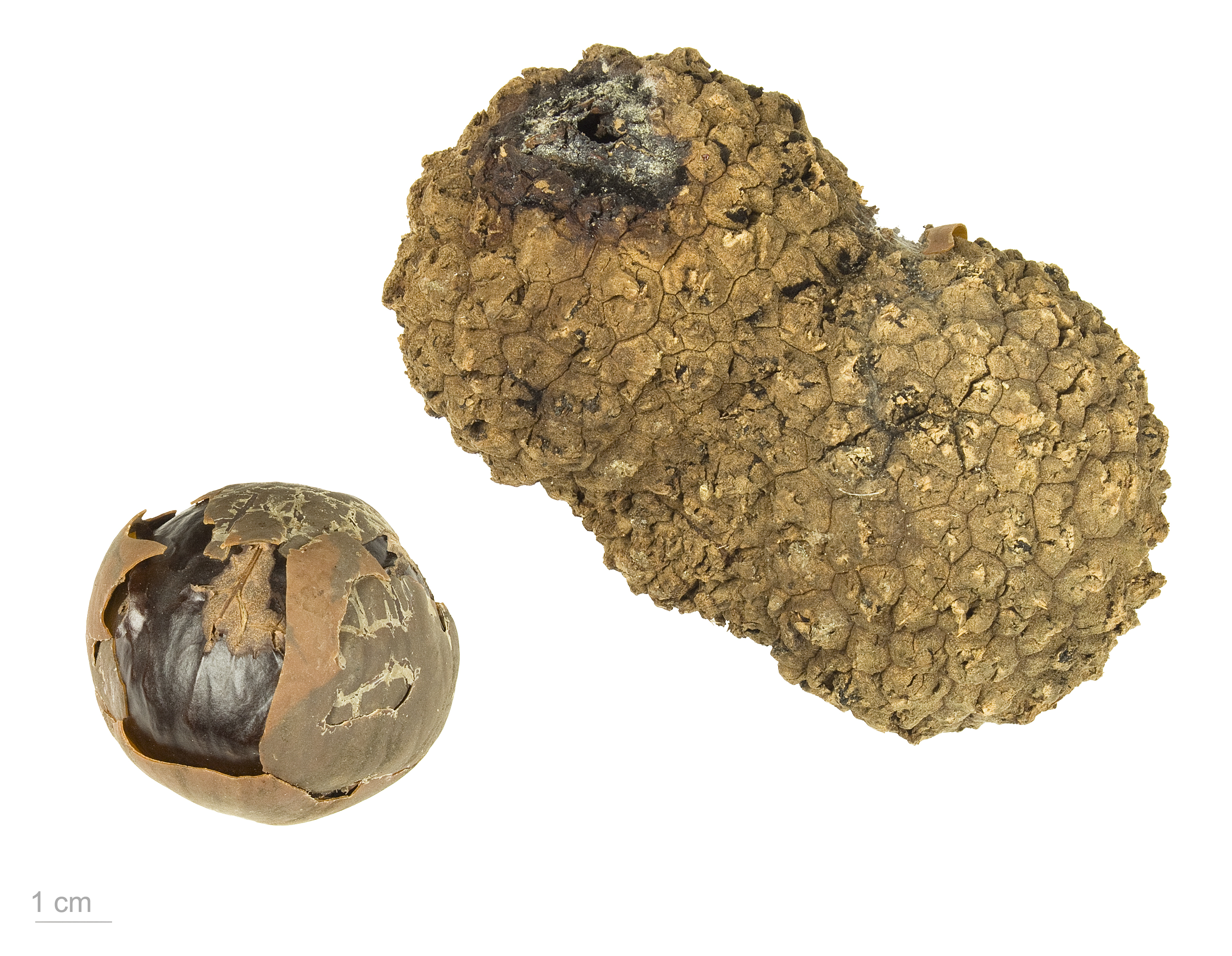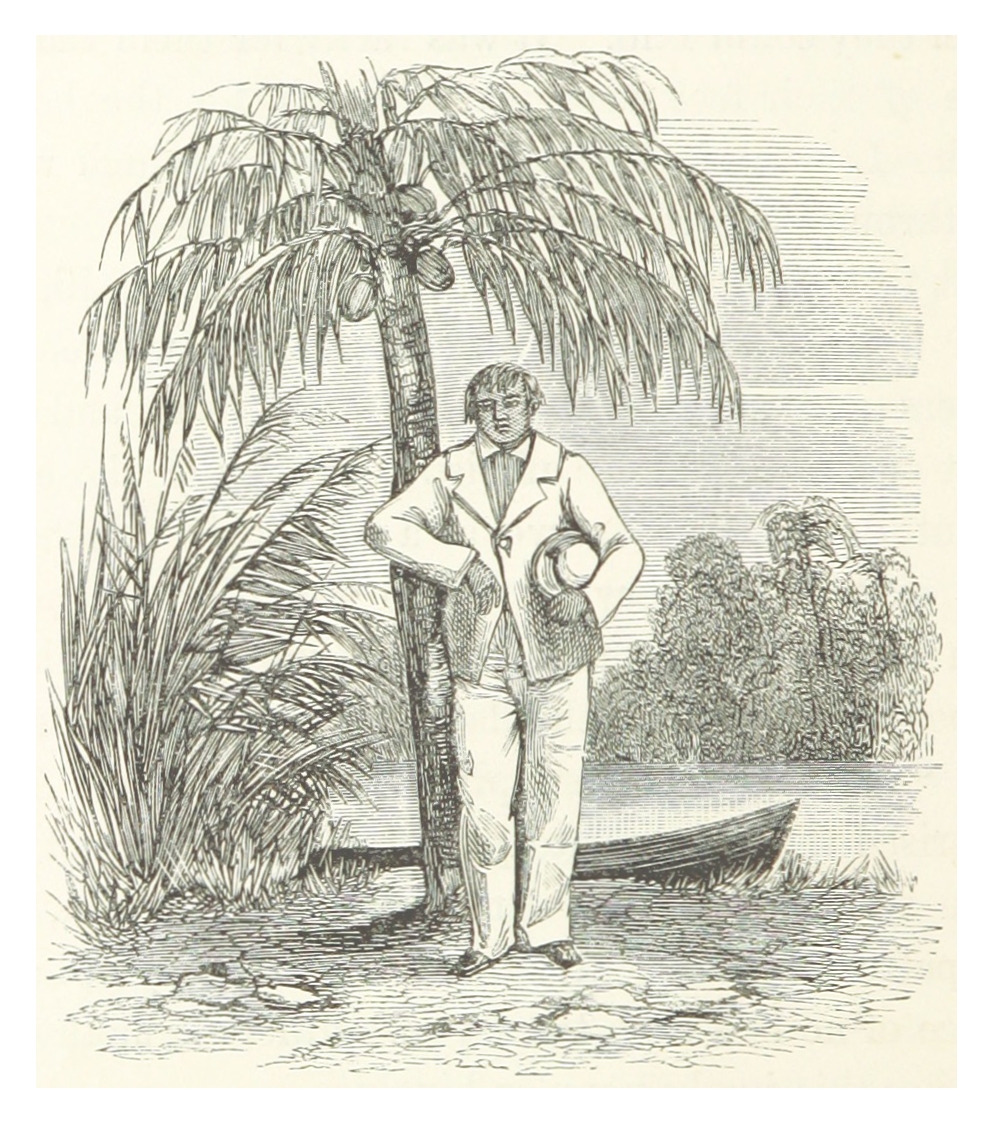|
Manicaria Martiana
''Manicaria'' is a palm genus which is found in Trinidad, Central and South America. It contains two recognized species: #''Manicaria martiana'' Burret – Colombia, northwestern Brazil #''Manicaria saccifera'' Gaertn. – Central America, Trinidad, Venezuela, Colombia, Ecuador, Peru, northwestern Brazil It has one of the largest known leaves in the plant kingdom (up to 8 metres in length). ''Manicaria'' thrives in swamps or estuarine areas where river meets ocean. In the Tortuguero region of Costa Rica, where ''Manicaria saccifera'' is plentiful, local people know this palm as "Palma Real", or "Royal Palm". Its heavy, large leaves are valued over other palm species as the best material for roof thatching. ''Manicaria saccifera'' is an obligate swamp species, and as most other palms, it thrives in the wet, humid conditions of tropical lowland forests. Myers (1981) states "In the humid environments of the neo-tropics there is an increase in the abundance of understory palms" ... [...More Info...] [...Related Items...] OR: [Wikipedia] [Google] [Baidu] |
Joseph Gaertner
Joseph Gaertner (12 March 1732 – 14 July 1791) was a German botanist, best known for his work on seeds, ''De Fructibus et Seminibus Plantarum'' (1788-1792). Biography He was born in Calw, and studied in Göttingen under Albrecht von Haller. He was primarily a naturalist, but also worked at physics and zoology. He travelled extensively to visit other naturalists. He was professor of anatomy in Tübingen in 1760, and was appointed professor of botany at St Petersburg in 1768, but returned to Calw in 1770. Gaertner made back cross to convert one species into another. Back cross increases nuclear gene frequency His observations were: 1. Dominance of traits 2. Equal contribution of male and female to the progeny 3. No variation in F1 (first generation of descendants) 4. Large variation in F2 (second generation of descendants) including parental and intermediate types 5. Some of F2 plants had entirely new traits but he was unable to give possible explanation for observ ... [...More Info...] [...Related Items...] OR: [Wikipedia] [Google] [Baidu] |
Barra Del Colorado Wildlife Refuge
Barra del Colorado Wildlife Refuge is a wildlife refuge, part of the Tortuguero Conservation Area, in Limón Province in the northeastern part of Costa Rica. It is the second largest rain forest preserve in the country and protects areas that contain hot humid forests, mangroves, canals and marine areas, bounded in part by the San Juan and Colorado rivers, and to the south the Tortuguero National Park. The area protected has a hot and humid climate with no dry season, and is the habitat of the endangered West Indian manatee as well as many caymans, crocodiles, and fish. It is also home to a variety of tapirs, jaguars, cougars, monkeys, ocelots, and other mammals. Birds found include osprey, toucans, cormorants, herons, hawk Hawks are bird of prey, birds of prey of the family Accipitridae. They are widely distributed and are found on all continents except Antarctica. * The subfamily Accipitrinae includes goshawks, sparrowhawks, sharp-shinned hawks and others. Th ...s, an ... [...More Info...] [...Related Items...] OR: [Wikipedia] [Google] [Baidu] |
Arecoideae
The Arecaceae is a family of perennial flowering plants in the monocot order Arecales. Their growth form can be climbers, shrubs, tree-like and stemless plants, all commonly known as palms. Those having a tree-like form are called palm trees. Currently, 181 genera with around 2,600 species are known, most of which are restricted to tropical and subtropical climates. Most palms are distinguished by their large, compound, evergreen leaves, known as fronds, arranged at the top of an unbranched stem. However, palms exhibit an enormous diversity in physical characteristics and inhabit nearly every type of habitat within their range, from rainforests to deserts. Palms are among the best known and most extensively cultivated plant families. They have been important to humans throughout much of history. Many common products and foods are derived from palms. In contemporary times, palms are also widely used in landscaping. In many historical cultures, because of their importance as ... [...More Info...] [...Related Items...] OR: [Wikipedia] [Google] [Baidu] |
Royal Botanic Gardens, Kew
Royal Botanic Gardens, Kew is a non-departmental public body in the United Kingdom sponsored by the Department for Environment, Food and Rural Affairs. An internationally important botanical research and education institution, it employs 1,100 staff. Its board of trustees is chaired by Dame Amelia Fawcett. The organisation manages botanic gardens at Kew in Richmond upon Thames in south-west London, and at Wakehurst, a National Trust property in Sussex which is home to the internationally important Millennium Seed Bank, whose scientists work with partner organisations in more than 95 countries. Kew, jointly with the Forestry Commission, founded Bedgebury National Pinetum in Kent in 1923, specialising in growing conifers. In 1994, the Castle Howard Arboretum Trust, which runs the Yorkshire Arboretum, was formed as a partnership between Kew and the Castle Howard Estate. In 2019, the organisation had 2,316,699 public visitors at Kew, and 312,813 at Wakehurst. Its site at Kew ... [...More Info...] [...Related Items...] OR: [Wikipedia] [Google] [Baidu] |
Ministry Of Environment, Energy And Telecommunications
The Ministry of Environment and Energy (MINAE, es, Ministerio de Ambiente y Energía) is a ministry or department of the government of Costa Rica. Agencies *SINAC National System of Conservation Areas (SINAC, es, Sistema Nacional de Áreas de Conservación) is part of the Ministry of Environment and Energy (MINAE) of Costa Rica. It is the administrator for the nation's national parks, conservation areas, an ... - National System of Conservation Areas *DGGM - Geology and Mining General Directorate *SETENA - National Technical Environmental Secretariat *TAA - Environmental Administrative Tribunal *OCIC - Costa Rican Office on Joint Implementation *FONAFIFO - National Forest Fund *DGH - General Directorate for Hydrocarbons *IMN - National Meteorological Institute *CONAGEBIO - National Commission for Biodiversity Management *PMP - Marine Park of the Pacific References External links * Costa Rica, Environment, Energy and Telecommunications Institutions of Costa ... [...More Info...] [...Related Items...] OR: [Wikipedia] [Google] [Baidu] |
Sustainable Fashion
Sustainable fashion (also known as eco-fashion) is a term describing products, processes, activities, and actors (policymakers, brands, consumers) aiming to achieve a carbon-neutral fashion industry, built on equality, social justice, animal welfare, and ecological integrity. Sustainable fashion concerns more than addressing fashion textiles or products. It addresses the entire process in which clothing is produced, consumed and disposed; who, what, how, when, where and the expected useful life of the product before entering landfill. The sustainable movement looks to combat the large carbon footprint that fast fashion has created by reducing the environmental impact of fashion such as air pollution, water pollution and overall climate change. In 2020, it was found that an approach of voluntary self-directed reform of textile manufacturing supply chains to reduce the environmental impact of fashion by large companies had failed. Measures to reform fashion beyond greenwashing ... [...More Info...] [...Related Items...] OR: [Wikipedia] [Google] [Baidu] |
Miskito People
The Miskitos are a native people in Central America. Their territory extends from Cape Camarón, Honduras, to Río Grande de Matagalpa, Nicaragua, along the Mosquito Coast, in the Western Caribbean Zone. Their population is estimated at 700,000 people as of 2021 according to the official Miskito Database. The Miskito people speak a native Miskito language, but many can also speak Miskito Coast Creole, Spanish, English, and German. Spanish is the language of education and government, but some family educate their children in English, German, or Miskito. Miskito Coast Creole, an English-based creole language, came about through frequent contact with the British for trading, as they predominated along this coast. Many are Christians. A 1987 peace agreement afforded them land rights over traditional lands. However, despite significant political struggles throughout their history, today the Miskito face human rights violations over land rights disputes, as recognized by the Inter-Ame ... [...More Info...] [...Related Items...] OR: [Wikipedia] [Google] [Baidu] |
Talamanca Languages
The Talamanca languages are a well-defined branch of Chibchan languages spoken in central–southern Costa Rica and northern Panama. They are: : Huetar (Güetar), Bribri The Bribri are an Indigenous people in eastern Costa Rica and northern Panama. Today, most Bribri people speak the Bribri language or Spanish. There are varying estimates from government officials of the group's population. Estimates of the t ... (Talamanca), Cabécar (Talamanca), Chánguena, Teribe (Quequexque, Naso), and maybe Movere (Move). References {{authority control Chibchan languages Indigenous languages of Central America Languages of Costa Rica Languages of Panama ... [...More Info...] [...Related Items...] OR: [Wikipedia] [Google] [Baidu] |
Thatch
Thatching is the craft of building a roof with dry vegetation such as straw, water reed, sedge (''Cladium mariscus''), rushes, heather, or palm branches, layering the vegetation so as to shed water away from the inner roof. Since the bulk of the vegetation stays dry and is densely packed—trapping air—thatching also functions as insulation. It is a very old roofing method and has been used in both tropical and temperate climates. Thatch is still employed by builders in developing countries, usually with low-cost local vegetation. By contrast, in some developed countries it is the choice of some affluent people who desire a rustic look for their home, would like a more ecologically friendly roof, or who have purchased an originally thatched abode. History Thatching methods have traditionally been passed down from generation to generation, and numerous descriptions of the materials and methods used in Europe over the past three centuries survive in archives and early public ... [...More Info...] [...Related Items...] OR: [Wikipedia] [Google] [Baidu] |
Banana Plantation
A banana plantation is a commercial agricultural facility found in tropical climates where bananas are grown. Geographic distribution Banana plants may grow with varying degrees of success in diverse climatic conditions, but commercial banana plantations are primarily found in equatorial regions, in banana exporting countries. The four leading banana export countries worldwide are Ecuador, Costa Rica, Philippines, and Colombia. Ecuador provides more than 33% of global banana exports. In 2004, banana producing countries totaled 130. Production, as well as exports and imports of bananas, are nonetheless concentrated in a few equatorial countries. 75% of total banana production in 2004 was generated in 10 countries. India, Ecuador, Brazil and China produced half of total bananas. Latin American and Caribbean countries led banana production up to the 1980s, and Asian nations took the lead in banana production during the 1990s. African production levels have remained mostly unchanged. ... [...More Info...] [...Related Items...] OR: [Wikipedia] [Google] [Baidu] |
Manicaria Juvenile
''Manicaria'' is a palm genus which is found in Trinidad, Central and South America. It contains two recognized species: #''Manicaria martiana'' Burret – Colombia, northwestern Brazil #''Manicaria saccifera'' Gaertn. – Central America, Trinidad, Venezuela, Colombia, Ecuador, Peru, northwestern Brazil It has one of the largest known leaves in the plant kingdom (up to 8 metres in length). ''Manicaria'' thrives in swamps or estuarine areas where river meets ocean. In the Tortuguero region of Costa Rica, where ''Manicaria saccifera'' is plentiful, local people know this palm as "Palma Real", or "Royal Palm". Its heavy, large leaves are valued over other palm species as the best material for roof thatching. ''Manicaria saccifera'' is an obligate swamp species, and as most other palms, it thrives in the wet, humid conditions of tropical lowland forests. Myers (1981) states "In the humid environments of the neo-tropics there is an increase in the abundance of understory palms" ... [...More Info...] [...Related Items...] OR: [Wikipedia] [Google] [Baidu] |
Laurentian University
Laurentian University (french: Université Laurentienne), officially the Laurentian University of Sudbury, is a mid-sized Bilingualism in Canada, bilingual public university in Greater Sudbury, Ontario, Canada, incorporated on March 28, 1960. Laurentian offers a variety of undergraduate, graduate-level, and doctorate degrees. Laurentian is the largest bilingual provider of distance education in Canada. The university programs specialize in many fields, including arts, social sciences, technology, natural sciences, engineering, mining, geophysics, health, business management, finance, and forensics. Despite claiming to have run balanced budgets in eight of the previous nine years, on 1 February 2021, 2021 Laurentian University Financial Crisis, Laurentian University filed suddenly for creditor protection. As part of its restructuring, on 12 April 2021 Laurentian University announced the closure of 58 undergraduate programs and 11 graduate programs spanning a diversity of subjects ... [...More Info...] [...Related Items...] OR: [Wikipedia] [Google] [Baidu] |


_01.jpg)



